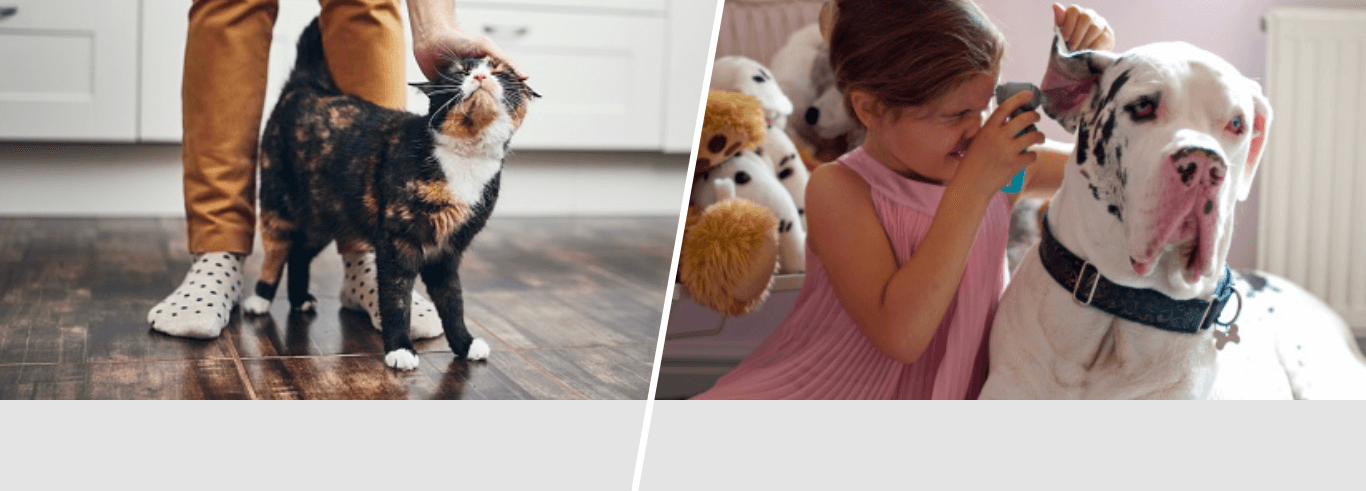How to toilet train your kitten
Cat toilet training might seem like a somewhat daunting process. However, felines are such intelligent creatures that with a little patience and guidance, you can easily house train your new kitten.
Here is everything you need to know about toilet training your kitten.
Indoor litter training
The first thing to consider if you want to litter train your kitten indoors is the litter itself. When purchasing cat litter, it is important to note that not all cat litter is suitable for kittens.
While having a self-cleaning litter box sounds ideal, it’s not always practical. Any cat litter that contains fragrances, harsh chemicals or clumping properties should be avoided for kittens under four months. Kittens, much like infants, like to put objects in their mouth and if ingested, these types of litter can cause serious harm to your kitten’s tummy.
You should instead opt for a fragrance-free, pellet-based litter that is less likely to be inhaled.
Your kitten’s litter tray
Where you place your litter box around the house is also an important factor. It is ideal to position it in a quiet area of the home, as this will help reduce any stage fright your kitten may have. Opt for somewhere that is easily accessible, but away from their food and drink. Not only is this more hygienic, but will teach your kitten that its litter tray has a separate function.
Choosing the right sized litter tray is essential. Kittens have tiny legs, and therefore struggle to jump. Start off with a fairly small and low tray, as you can gradually increase the size as your kitten grows.
Alternatively, you could purchase an adult-sized cat litter box, but make sure that your kitten is able to climb into it on its own. Similarly, if you’ve purchased a litter tray that has a lid, it might be worth removing the lid until your kitten has adapted. You should start with letting your kitten explore the litter box on its own, to encourage them to not be afraid.
How to toilet train a kitten
Once your kitten has become familiar with the litter box, try placing them in the tray throughout the day to encourage them to use it. We recommend placing them in the tray early in the morning, after every meal, and the last thing at night. You should give your kitten a bit of space at first, as the cat-toilet experience is preferably a private one for them.
Positive reassurance is key. If your kitten has an accident, gently pick them up and place them in the litter tray. They should begin to slowly understand the purpose of the litter tray this way.
Similarly, to help your kitten get a better idea of using the litter tray, you could leave a small amount of previous waste in the tray.
However, while leaving a small amount of waste in the tray is fine, you must ensure the tray is cleaned regularly as a dirty tray will discourage your kitten from using it. The litter should be changed once a week, and the tray itself should be washed with fragrance-free soap.
Familiarity will come in time with your kitten. Is it hard to toilet train a cat? No, but litter training does not come overnight, so patience and perseverance with your kitten are key.
Outdoor toilet training
When training your kitten to use the outdoors as a toilet, it may be slightly easier. This is because there is more freedom to roam the garden or general outdoors and your kitten may also gain more confidence in going to the toilet.
Before allowing your kitten outside, they must have completed all their vaccinations (13 to 14 weeks old). So to start with, learning how to house train a cat using a litter tray indoors is a must.
It is also vital that you do not leave your kitten unsupervised in the outdoors, as other animals could pose a threat. This advice should be followed until your kitten is aged around six months old.
Similarly to litter training, start with getting your kitten familiar with their new surroundings. You should still take them to a quiet, secluded area, so they can have their privacy. Once your kitten is older (six months plus) and it is safe enough for them to go outside on their own, if your home is suitable, you should consider investing in a cat flap. This is a great way to give your furry friend freedom when using the toilet.
There can be many litter box problems you face with your kitten, but whichever type of toilet training you opt for, remember to reward your kitten when they have correctly gone to the toilet. This could be with a small and tasty cat treat or a cuddle. This praise will encourage them to continue their actions too.
Toilet training your kitten can be quite a challenge! Remember it’s important to protect your cat with Argos Pet Insurance provided by Pinnacle Insurance Ltd. Explore our cat insurance policies today.
 Sorry, our lines are now closed
Sorry, our lines are now closed




